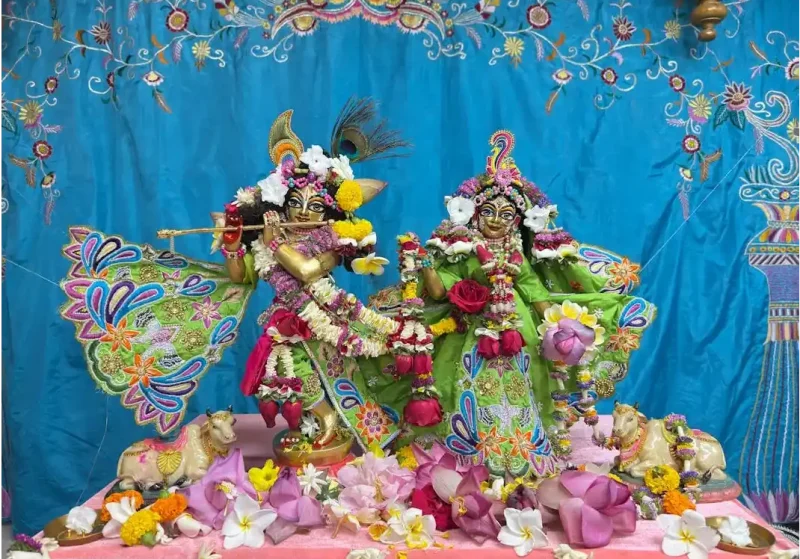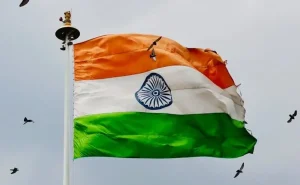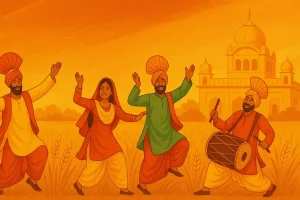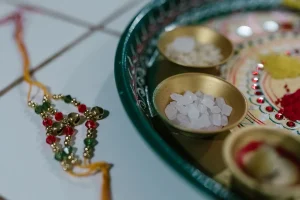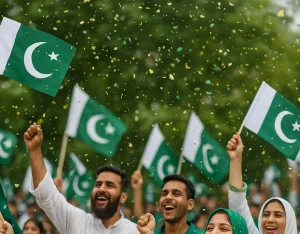The Story of Janmashtami: Why We Celebrate Lord Krishna’s Birthday
Every year, the festival of Janmashtami fills the air with devotion, joy, and the sweet sound of bhajans (devotional songs). This special day marks the birth of Lord Krishna, one of the most beloved and revered deities in Hinduism. It is a time when families and communities come together to celebrate the arrival of the divine protector who taught the world about love, duty (dharma), and righteousness.
But the story of Krishna’s birth is not a quiet one. It is a dramatic tale of a divine prophecy, a cruel king, and a miraculous midnight escape. This article will explore the timeless story behind Janmashtami, from the dark prison cell in Mathura to the joyful village of Gokul, and explain the beautiful traditions that make this festival so special.
The World Awaiting a Savior
To understand the importance of Krishna’s birth, we have to go back to the age in which he was born, the Dvapara Yuga. The earth was suffering under the rule of cruel and arrogant kings. The worst among them was Kansa, the tyrannical ruler of Mathura. Although he was the brother of a kind and gentle woman named Devaki, Kansa was power-hungry and ruthless.
On the day of his sister Devaki’s wedding to a noble man named Vasudeva, a divine voice from the sky delivered a terrifying prophecy. It foretold that Kansa would meet his end at the hands of Devaki’s eighth child. Terrified of losing his power and his life, Kansa’s cruelty took over. He drew his sword to kill his own sister, but Vasudeva pleaded for her life, promising to hand over every child born to them. Kansa agreed but threw both Devaki and Vasudeva into his darkest prison cell, binding them in chains to await the birth of their children.
The Miraculous Birth of Lord Krishna
One by one, Devaki gave birth to six children, and each time, the merciless Kansa snatched the newborn from her arms and killed the infant. When the time came for the eighth child to be born, the entire atmosphere of the prison began to change.
At the stroke of midnight, as storms raged outside, the divine child was born. As soon as he arrived, a series of miracles unfolded. The heavy chains that bound Vasudeva and Devaki miraculously broke and fell away. The locked prison doors swung open on their own, and the palace guards all fell into a deep, magical sleep. A divine voice instructed Vasudeva to take the newborn child across the Yamuna River to the village of Gokul and exchange him with the baby girl who had just been born to the village head, Nanda, and his wife, Yashoda.
With the baby Krishna in a basket, Vasudeva made his way out of the prison. When he reached the raging Yamuna River, its waters parted to let him pass. He safely reached the home of Nanda and Yashoda, where he gently placed Krishna next to the sleeping mother and took her newborn daughter back to the prison with him.
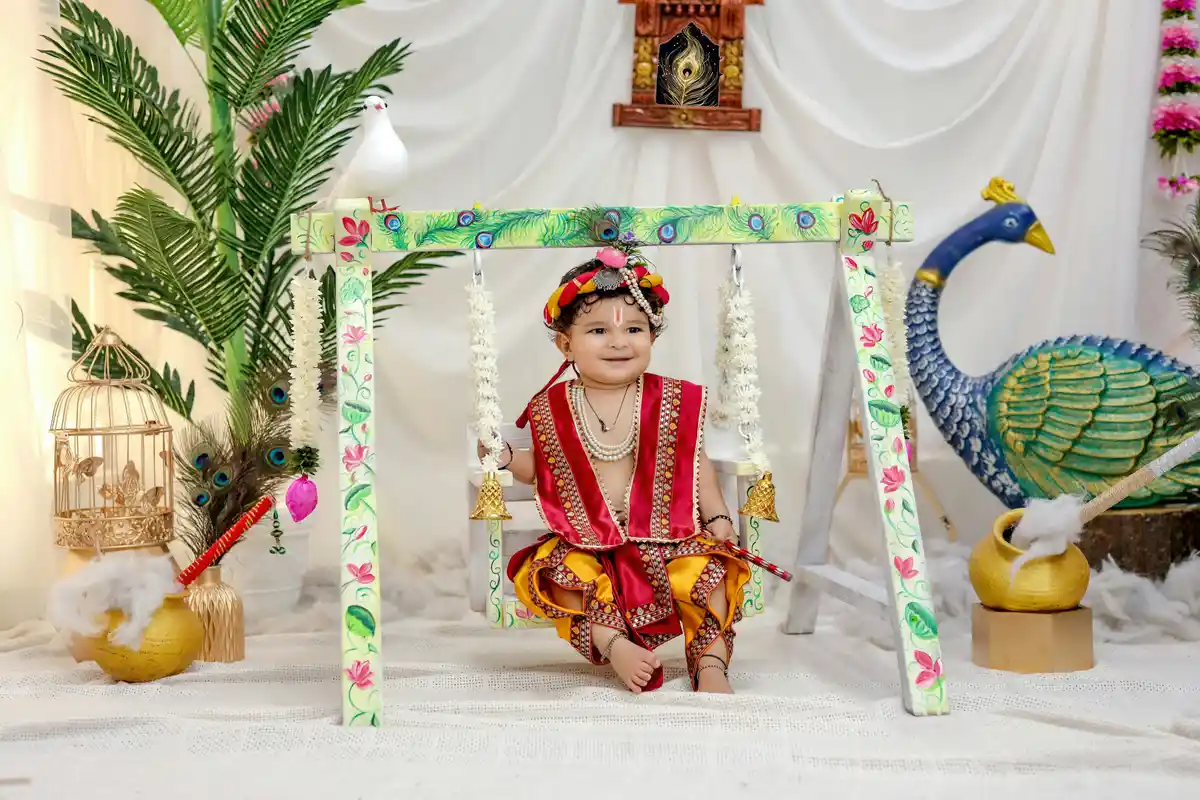
The Divine Child of Gokul
When the baby girl cried, the prison guards awoke and rushed to inform Kansa. Believing this to be the eighth child, Kansa seized the baby to kill her, but she slipped from his hands, flew into the sky, and transformed into the goddess Yogamaya. She laughed and announced to Kansa, “You fool! The one who is destined to kill you has already been born and is safe elsewhere.”
Meanwhile, the entire village of Gokul was celebrating the birth of Nanda and Yashoda’s beautiful son, unaware of the divine exchange. Krishna grew up in this loving home, charming everyone with his playful and mischievous nature. He was known as the Makhan Chor (butter thief) for his love of stealing freshly churned butter. But even in his childhood games, his divine power was evident. Kansa, desperate to find and kill the child from the prophecy, sent many demons in disguise to Gokul. But the young Krishna effortlessly defeated them all, from the poison-wielding demoness Putana to the whirlwind demon Trinavarta, protecting his village and revealing his true divine nature.
How Janmashtami is Celebrated Today
Today, the birth of Lord Krishna is celebrated with great devotion and enthusiasm by millions of people around the world. The celebrations often include:
Fasting: Many devotees observe a fast throughout the day, breaking it only at midnight, the time of Krishna’s birth.
Midnight Celebrations: Temples are beautifully decorated, and at midnight, special prayers (pujas) are performed, and the birth of the infant Krishna is joyously announced.
Bhajans and Kirtan: Throughout the day and night, people gather to sing devotional songs and hymns that narrate the stories of Krishna’s life.
Dahi Handi: In regions like Maharashtra, a fun and competitive tradition called Dahi Handi takes place. Young men form human pyramids to reach and break a high-hanging clay pot filled with curd, mimicking Krishna’s love for butter.
Raslila Performances: In places like Mathura and Vrindavan, the heart of Krishna’s childhood, elaborate plays and dance dramas called Raslilas are performed, depicting scenes from his life.
Conclusion
Janmashtami is more than just a birthday celebration; it is a joyous reminder of the victory of good over evil, of hope in times of darkness, and of the power of divine love. The life of Lord Krishna is a timeless source of wisdom, teaching us about our duty (dharma), righteousness, and the path to spiritual liberation. Each year, this beautiful festival gives us a chance to reflect on these teachings and to fill our own lives with a little more joy, love, and devotion.

